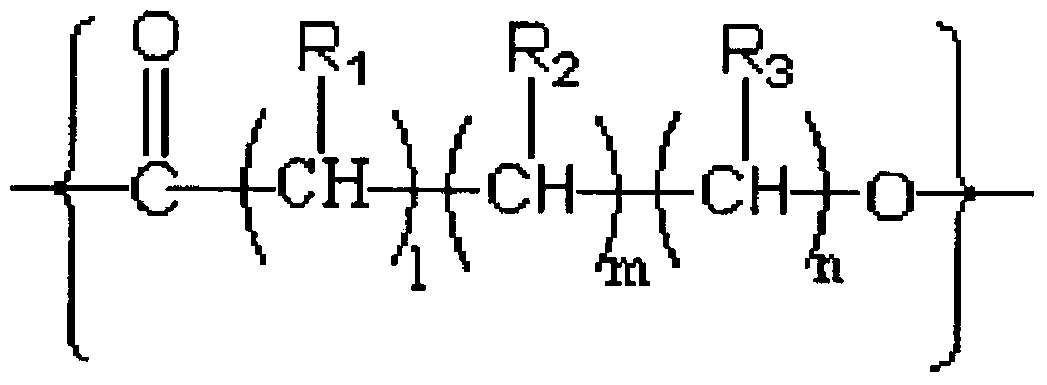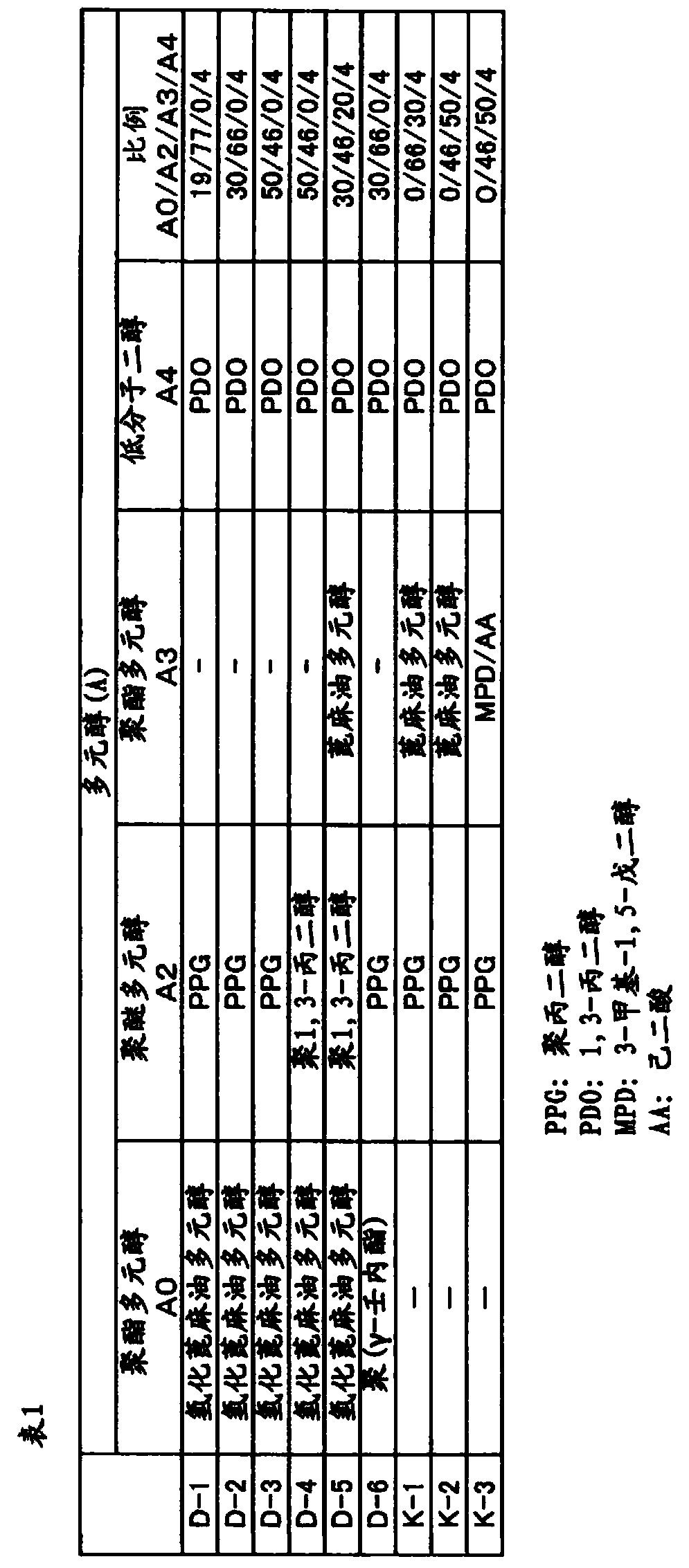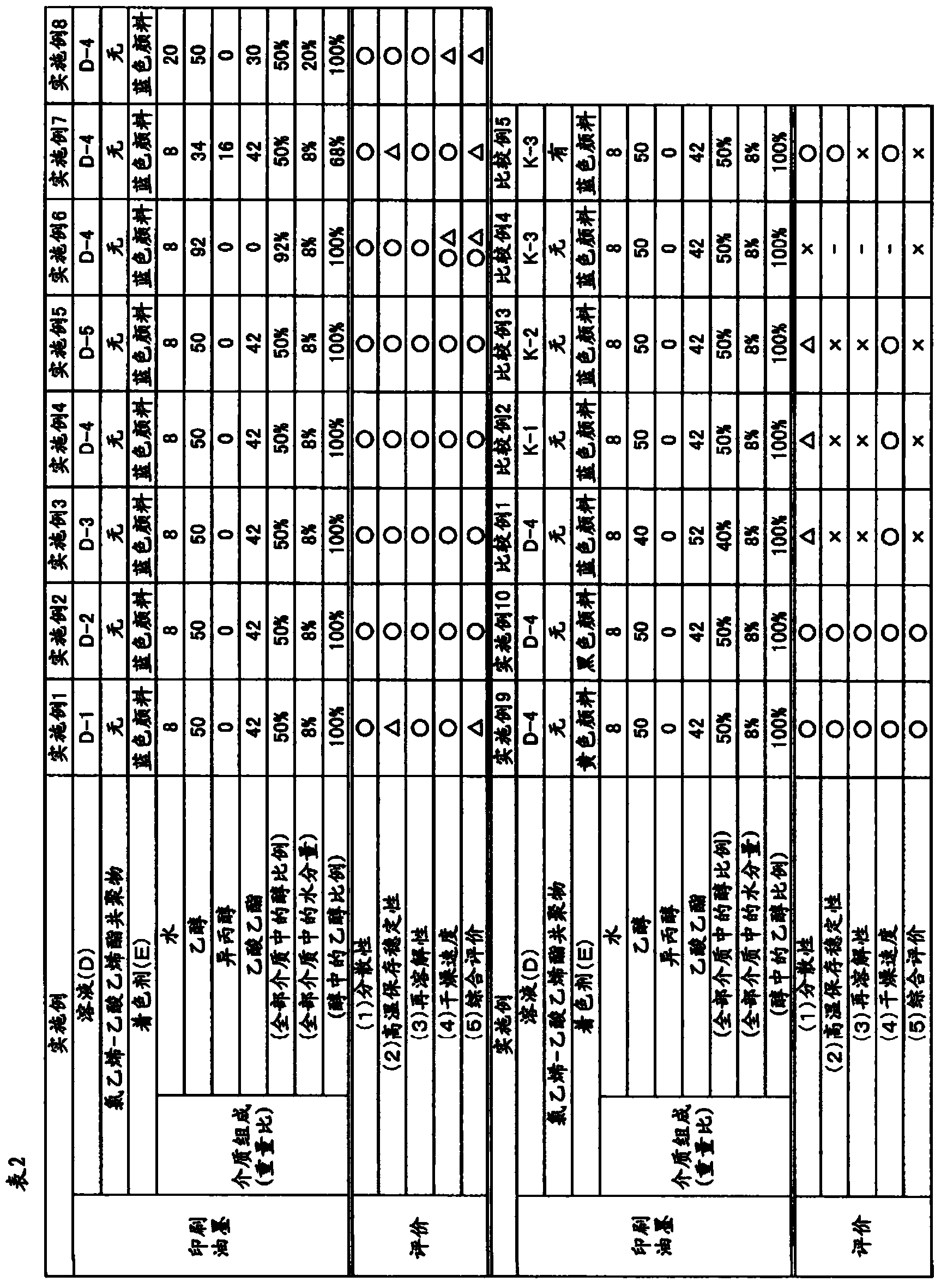Alcohol-based printing ink composition
By using polyurethane urea resin and specific polyester polyol in alcohol-based printing ink, combined with a high proportion of alcohol and water, the problem of insufficient pigment dispersion and re-solubility is solved, and the high performance and long-term stability of alcohol-based printing ink are achieved. sex.
- Summary
- Abstract
- Description
- Claims
- Application Information
AI Technical Summary
Problems solved by technology
Method used
Image
Examples
Embodiment
[0104] The following examples illustrate the present invention more specifically, but the following examples do not limit the scope of rights of the present invention. In addition, "part" in an Example shows "weight part", and "%" shows "weight%".
[0105] In addition, the measuring methods of "resin solid content concentration", "viscosity", "amine value", "weight average molecular weight" and "acid value" in an Example are as follows.
[0106] Resin solid content concentration: In accordance with JIS K5601-1-2, the heating residual content when measured at a heating temperature of 150° C. and a heating time of 20 minutes was defined as resin solid content concentration (%).
[0107] Viscosity: Measured at 25° C. using a B-type viscometer (manufactured by Tokyo Keiki Co., Ltd., model BL).
[0108] Amine value: Measure about 3 g of polyurethane urea resin solution into a flask, add 50 ml of methanol and dissolve it, use 0.1 mol / liter hydrochloric acid standard solution, titra...
Synthetic example 1
[0115] (Synthesis example 1)
[0116] In a flask equipped with a stirrer, a thermometer, a reflux cooler, and a nitrogen inlet tube, hydrogenated castor oil polyol (product name: "URIC PH-100" manufactured by Ito Oil Co., Ltd., hydroxyl value 41.6 mgKOH / g, number average molecular weight 2697) 18 parts, polypropylene glycol (hydroxyl value 57.3mgKOH / g, number average molecular weight 1958) 72 parts, 1,3-propanediol 3.5 parts and isophorone diisocyanate 39.8 parts, react at 100°C for 6 hours under nitrogen flow A urethane prepolymer is produced.
[0117] Next, 57.1 parts of ethyl acetate was added to the obtained urethane prepolymer to prepare a homogeneous solution of the urethane prepolymer. Next, in a mixture composed of 16.7 parts of isophorone diamine, 167.9 parts of ethyl acetate, and 225 parts of ethanol, the above-mentioned urethane prepolymer solution was added dropwise over 1 hour, followed by reaction for 1 hour to obtain polyurethane A solution of urea resin (D-1...
Synthetic example 2
[0119] (Synthesis example 2)
[0120] In the flask equipped with stirrer, thermometer, reflux cooler and nitrogen inlet pipe, add 28.2 parts of hydrogenated castor oil polyol (product name: "URIC PH-100") identical to Synthesis Example 1, polypropylene glycol (hydroxyl value 57.3mgKOH / g, number average molecular weight 1958) 61.4 parts, 3.7 parts of 1,3-propanediol and 39.9 parts of isophorone diisocyanate were reacted at 100° C. for 6 hours under a nitrogen stream to produce a urethane prepolymer.
[0121]Next, 57.1 parts of ethyl acetate was added to the obtained urethane prepolymer to prepare a homogeneous solution of the urethane prepolymer. Next, in a mixture composed of 16.8 parts of isophorone diamine, 167.9 parts of ethyl acetate, and 225 parts of ethanol, the above-mentioned urethane prepolymer solution was added dropwise over 1 hour, followed by reaction for 1 hour to obtain polyurethane A solution of urea resin (D-2).
[0122] Regarding the solution of the obtai...
PUM
 Login to View More
Login to View More Abstract
Description
Claims
Application Information
 Login to View More
Login to View More - R&D
- Intellectual Property
- Life Sciences
- Materials
- Tech Scout
- Unparalleled Data Quality
- Higher Quality Content
- 60% Fewer Hallucinations
Browse by: Latest US Patents, China's latest patents, Technical Efficacy Thesaurus, Application Domain, Technology Topic, Popular Technical Reports.
© 2025 PatSnap. All rights reserved.Legal|Privacy policy|Modern Slavery Act Transparency Statement|Sitemap|About US| Contact US: help@patsnap.com



